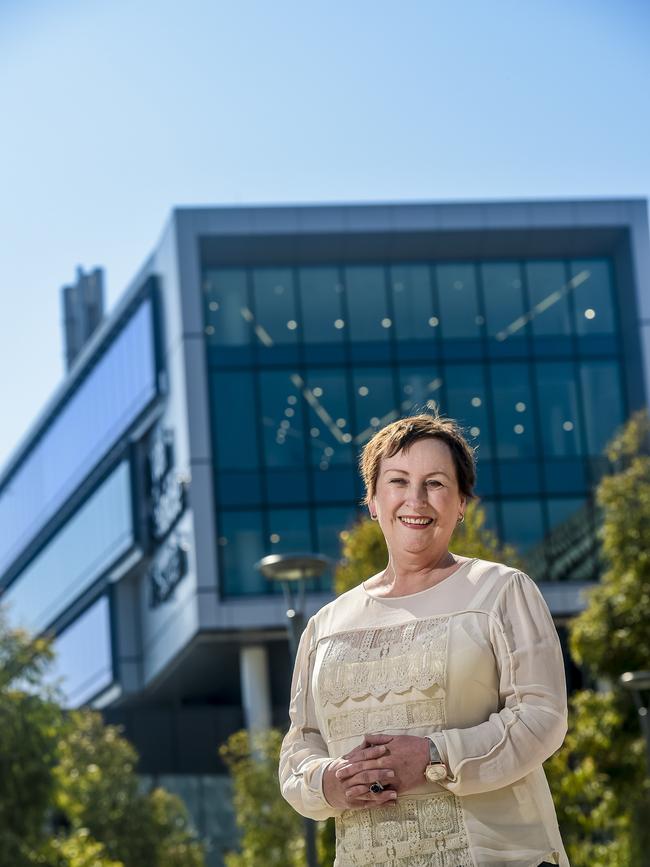Furious RAH doctors revolt over ‘unlawful’ order to rush their rounds
RAH doctors say an order to fast-track their rounds to clear ward beds and ease ramping is illegal, dangerous and would leave them just three minutes to assess each patient.
SA News
Don't miss out on the headlines from SA News. Followed categories will be added to My News.
Furious doctors have revolted against attempts by the boss of the Royal Adelaide Hospital to fast-track patient discharges to ease ramping, saying it would leave them around three minutes to assess a patient with no time for teaching junior colleagues.
The order has been slapped down by the doctors’ union as “unlawful and unreasonable” and rejected by the SA Employment Tribunal after a late night injunction.
Central Adelaide Local Health Network (CALHN) chief executive Lesley Dwyer issued an executive order that consultants finish their rounds by 10.30am, seven days a week – rounds normally last well into the afternoon.
The order on Friday came as the state government which came to power with a promise to “fix ramping” faces growing pressure as ramping soars to record levels.
The doctors’ union SASMOA sought an urgent injunction from the tribunal on Friday night which recommended it be withdrawn, and another hearing took place on Monday which failed to find a resolution between SASMOA and CALHN.
Another further hearing is scheduled for Thursday and if no resolution is found then, the issue will go to a judge to make a decision on whether the order can be enforced or must be withdrawn.
Ms Dwyer’s message to staff noted across CALHN there are often between 20-30 patients waiting to be admitted, often for “too long” and this puts pressure on EDs.
She said most patients are discharged from midafternoon to the early evening but doing it earlier in the day “would create the capacity of at least another ward.”
Her order states:
CONSULTANT (or Senior Proxy) led rounding to be completed by 10:30am seven days a week. A 95 per cent compliance rate to be achieved within three months;
ADMITTED patients suitable for weekend discharge to be identified on the Friday prior to the weekend, with discharge protocols to be completed prior to 10.30am on weekends. A 95 per cent compliance rate to be achieved within three months.

“Programs and teams are expected to implement this immediately; however, I realise that this will require time to work out the best way to affect this, we know it may take until Christmas to achieve the target of 95 per cent,” it states.
As well as the RAH the order covers The Queen Elizabeth Hospital, Hampstead Rehabilitation Centre and Glenside Health Service.
SASMOA was not consulted and says the order does not comply with their enterprise agreement.
“The direction effectively requires consultants to work across seven days, a breach of the industrial instrument except for consultants employed as shift workers,” SASMOA senior industrial officer Bernadette Mulholland told members.
The union’s successful appeal to the tribunal means the order is not being enforced, however relations between clinicians and management have significantly soured.
SASMOA says it is trying to work with the health bureaucracy “to address this health crisis. Given the lack of communication on this matter and CALHN’s overt failures to comply with the industrial requirements SASMOA will be considering our relationship with the employer in these forums.”
Doctors have told The Advertiser Ms Dwyer “has lost the confidence of the medical staff”.
Ms Dwyer told The Advertiser that prior to issuing the order she had spoken to “a number of senior clinical leaders who indicated their support” for the move.
“Our data from the last few years shows we have been discharging most patients from mid-afternoon to early evening,” she said.
“This is not good enough for our patients or the South Australian community.
“This (order) will create the capacity of at least another ward, 15 to 30 beds, which in turn allows patients to be admitted more quickly to the appropriate ward from the Emergency Department, and will reduce ramping.
“While I recognise this may take some time for us to achieve, delivering on this requires all medical, nursing, and allied health staff to work together.”





